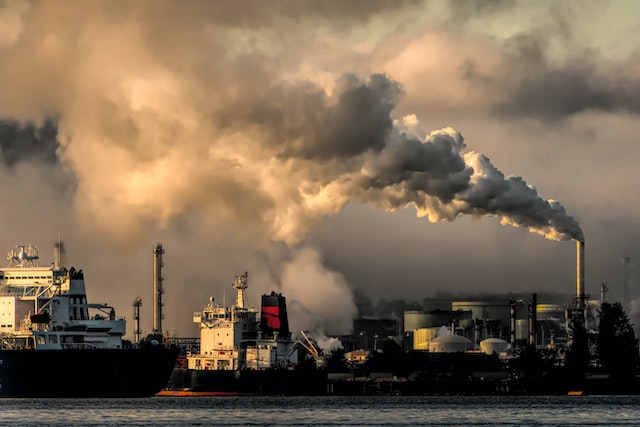
Over 6 million people die prematurely yearly from cardiovascular disease, stroke, diabetes, and respiratory illness due to air pollution. That’s higher than what’s lost to AIDS, TB, and malaria. Adverse health outcomes and economic costs, such as missed work days, from exposure to air pollution, are most severe for children, the elderly, persons with preexisting conditions, and members of minority and low-income areas. Before you proceed, you might want to check this excellent book, The Secrets Of The Immortal Nicholas Flamel Series, on Bookslike.
The term “air pollution” refers to a collection of contaminants that are too tiny to be seen by the naked eye. Long-term exposure to some pollutants has increased the risk of emphysema more than smoking twenty cigarettes daily. Moreover, recent research has demonstrated that air pollution has negative effects on psychological well-being, economic output, and stock market performance. Air pollution is a silent killer; understanding it better will help us create effective solutions.
What Are Air Pollution’s Health Effects?
A wide range of health problems can be brought on by excessive air pollution. Superfine PM2.5 particles that can get deep into the lungs’ airways are the most dangerous to people’s health and are strongly linked to high rates of premature death. It’s harmful since it can lead to pneumonia, heart problems, and lung cancer. The effects on health from exposure to air pollution have been linked to short and extended exposure periods. People with preexisting conditions are more likely to suffer more severe consequences. Those at the lowest socioeconomic echelons, as well as young children, are especially at risk. Extremely high levels of air pollution have been linked to several health problems. It has a higher chance of getting pneumonia, heart disease, and lung cancer. Air pollution has been linked to adverse health effects immediately after exposure and decades later. People with preexisting health conditions are more likely to experience more severe consequences.
Pollution affects human health
Over 6 million people die prematurely yearly from cardiovascular disease, stroke, diabetes, and respiratory illness due to air pollution. More people lost than died from all cases of AIDS, TB, and malaria. Air pollution has been linked to various short- and long-term health problems. It has been shown to increase the risk of stroke, COPD, trachea, bronchus, and lung malignancies, as well as exacerbate asthma symptoms and respiratory infections.
How Can Regular People Safeguard Themselves?
Everyone must do their part to reduce air pollution. We should all be doing much more. To clean up the air, we must act quickly and proactively. It’s crucial to make concerted, coordinated efforts with the full participation of all relevant sectors. All levels of government (federal, state, and local), municipalities, members of the general public and individual citizens all count.
To The Governments of The World: lower emissions and get national regulations that follow WHO recommendations for air quality. Air quality education and research should be prioritized.
Municipalities and small communities: It is imperative that public health is considered at the outset of public policy development across all sectors and that adequate data and evaluation tools be available.
Aside from the group: Keep fighting for the right to live in safe, sustainable places. Don’t give your governments a pass.
We are all – Everyone is responsible for their actions, whether they are in government, business, or as an individual. You owe it to yourself, your kids, and their kids to give sustainable lifestyle choices some severe thought.
PM Stands For “Particulate Matter,” And What Exactly Is That?
Dust, dirt, soot, smoke, and liquid droplets are all particulate matter found in the air. Diesel automobiles and coal-fired power stations are two familiar sources that generate significant amounts of particulate matter into the atmosphere. PM10, or particles with a diameter of fewer than 10 micrometers, can be breathed and build up in the lungs, posing a health risk. “Fine” particles, defined as those with a diameter of 2.5 micrometers or less (PM2.5), are the most dangerous to human health. Fine particles can penetrate the lungs profoundly because of their small size (about 1/30th the average width of a human hair).
Where Does This Air Pollution Come From, And What Are Its Main Factors?
Inefficient transportation (polluting fuels and vehicles), inefficient combustion of domestic fuels for cooking, lighting, and heating, coal-fired power plants, agriculture, and garbage burning are all significant contributors to ambient air pollution.
What Steps Can Nations Take To Lessen Atmospheric Pollution?
Sustainable urban transportation, solid waste management, improved access to clean household fuels and cook stoves, a growing market for renewable energy and energy efficiency, and measures to limit emissions from industry are all examples of interventions that can help cut down on air pollution.
How Does WHO Reduce Air Pollution?
The World Health Organization (WHO) is responsible for evaluating the available research on the health effects of air pollution and developing strategies to mitigate the problem. The World Health Organization’s primary role is to determine which air pollutants pose the greatest threat to human health and to keep tabs on them. This aids WHO Member States in concentrating their efforts where they will have the most impact on preventing or mitigating health hazards.
As of 2015, a resolution to “address the detrimental health effects of air pollution” had been accepted by WHO Member States. The Member States adopted a plan for “an expanded global response to the detrimental health impacts of air pollution” the following year. WHO is focusing on four primary areas.
- Raising the level of understanding
- Maintaining a Record of Events and Reporting Them
- International management and cooperation
- Building up the strength of institutions

Abdul Qadeer is highly experienced in creating engaging content that adds real value to a blog, website, or brand. He is creating content for multiple niches like technology, SEO, Marketing, Health, Education and Career Development, etc.